Mount Lang Bian is one of those epic, unmissable spots when trying to catch up with the numerous Da Lat plateau endemics in central Vietnam. Darío Gijón and I took a chance and visited the mountain during our summer trip in Southeast Asia, aware that the dates were far from ideal. We stayed at a hostel in Da Lat city and combined Uber cabs and hitchhiking to move around (no mobilete data service needed), and getting around always felt comfortable and easy.
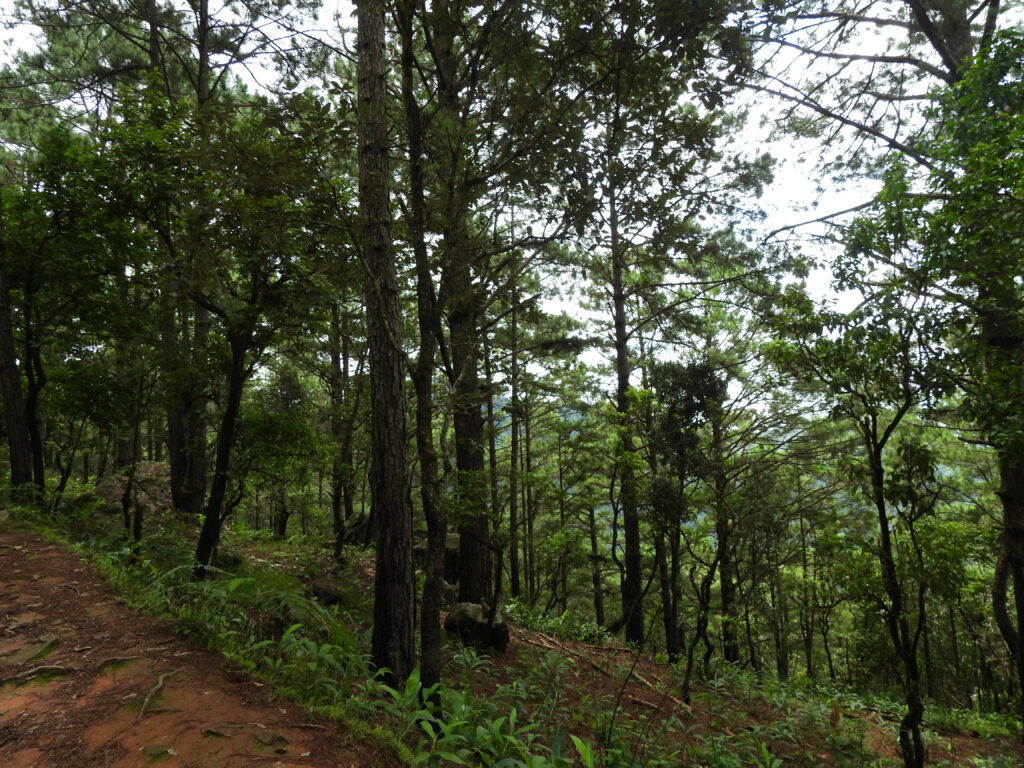
The same applies to Mount Lang Bian. We reached the entrance at the base around 06:40 in the morning. The whole entrance area gave the impression of being developed as a destination for Chinese and other Asian tourists — who were generally nowhere to be seen in August. These areas were favored by few species, including Burmese shrikes (Lanius collurioudes) or common mynas (Acridotheres tristis). We encountered several such places in Vietnam, with corny sculptures and photocalls covering perfectly mowed lawns, interesting and rather funny for European standards.

Another interesting impression was how similar this forest felt from European temperate mixed forests. The forest structure and the bird diversity were analogous to that of Central Europe.

Nonetheless, Mount Lang Bian harbours a population of the local races of red crossbill (Loxia curvirostra), Eurasian jay (Garrulus glandarius) and gray-headed woodpecker (Picus canus), among numerous species of clades widespread in Europe, thriving in a temperate pine forest mixed with deciduous trees. This déjà vu feeling was odd, however, as European-looking birds and plants were mixed with exotic montane forest Asian specialties.
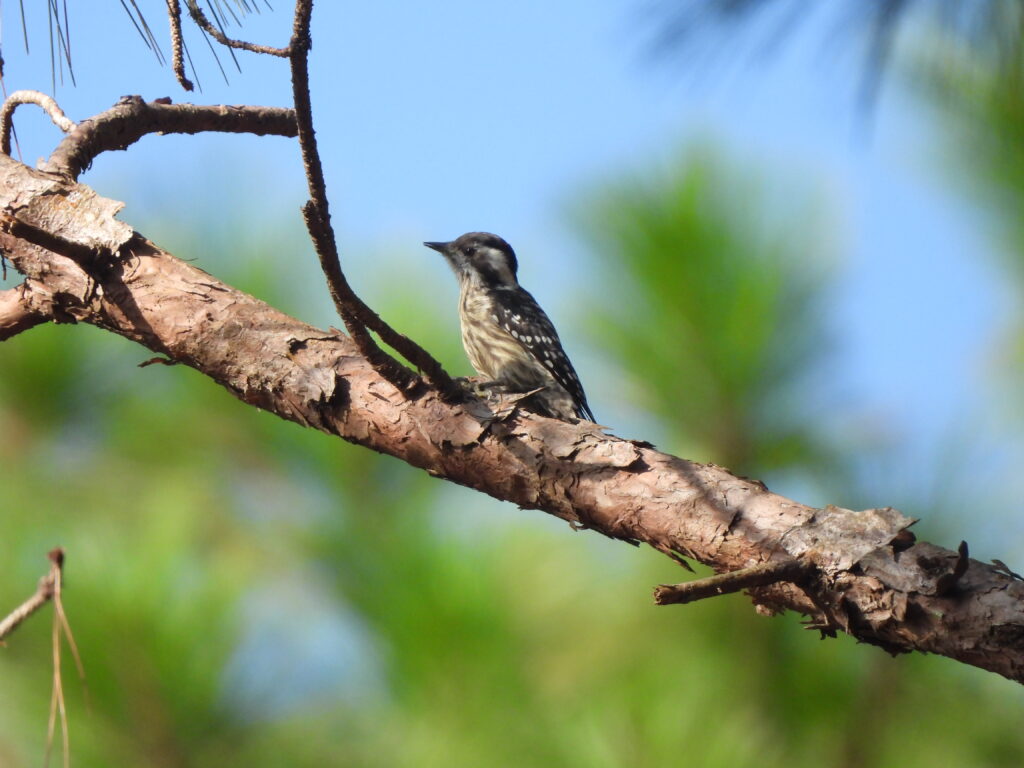
The first stretch of road uphill after the entrance area crossed a pine forest with some understory development, with abundant and cooperative gray bushchats (Saxicola ferreus) perched on twigs and shrubs.
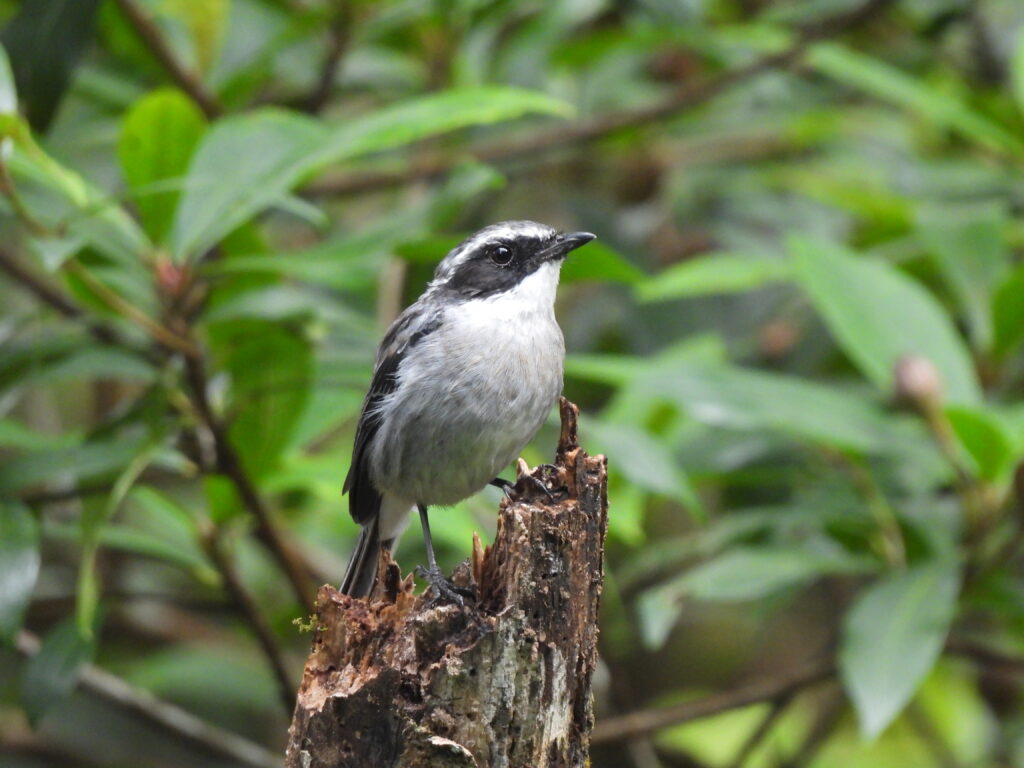
The first flocks foraging in the canopy featured long-tailed minivets (Pericrocotus ethologus) and mountain fulvettas (Alcippe peracensis). Several gray-capped pygmy woodpeckers (Yungipicus canicapillus) joined them, creeping on the pine trees.
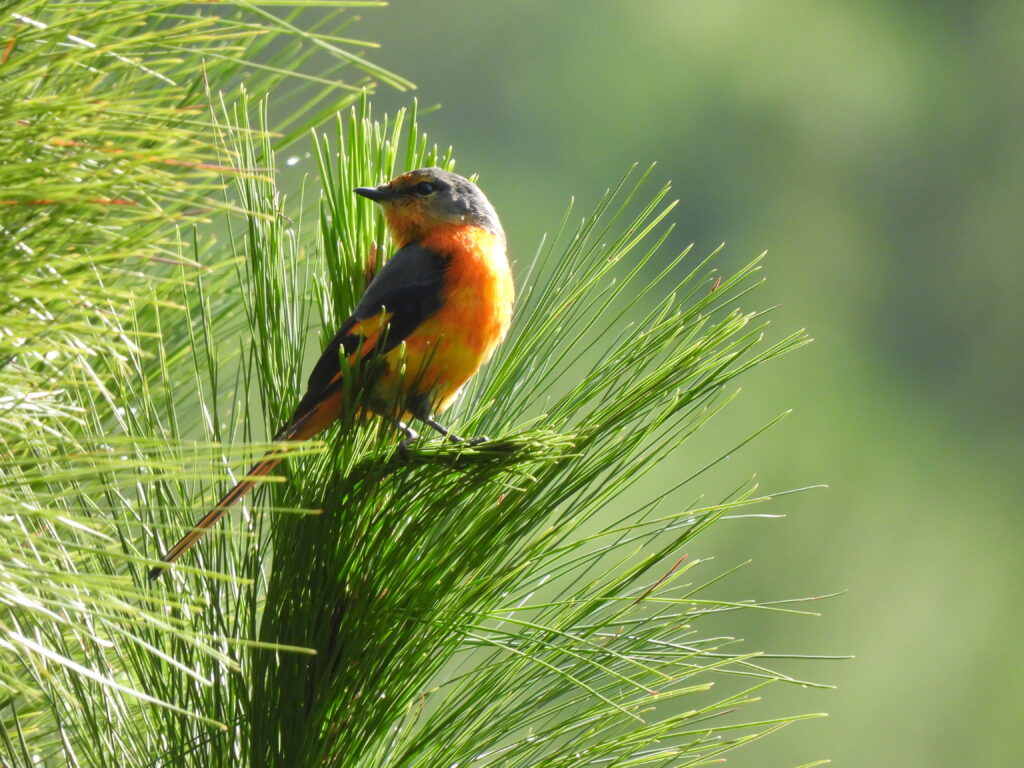
Birds were more abundant as we walked higher in altitude. There were proggressively more deciduous trees and other plants within the pine trees, and we bumped into numerous leaf warblers, including Kloss’s leaf warblers (Phylloscopus ogilviegranti) which provided awesome views.
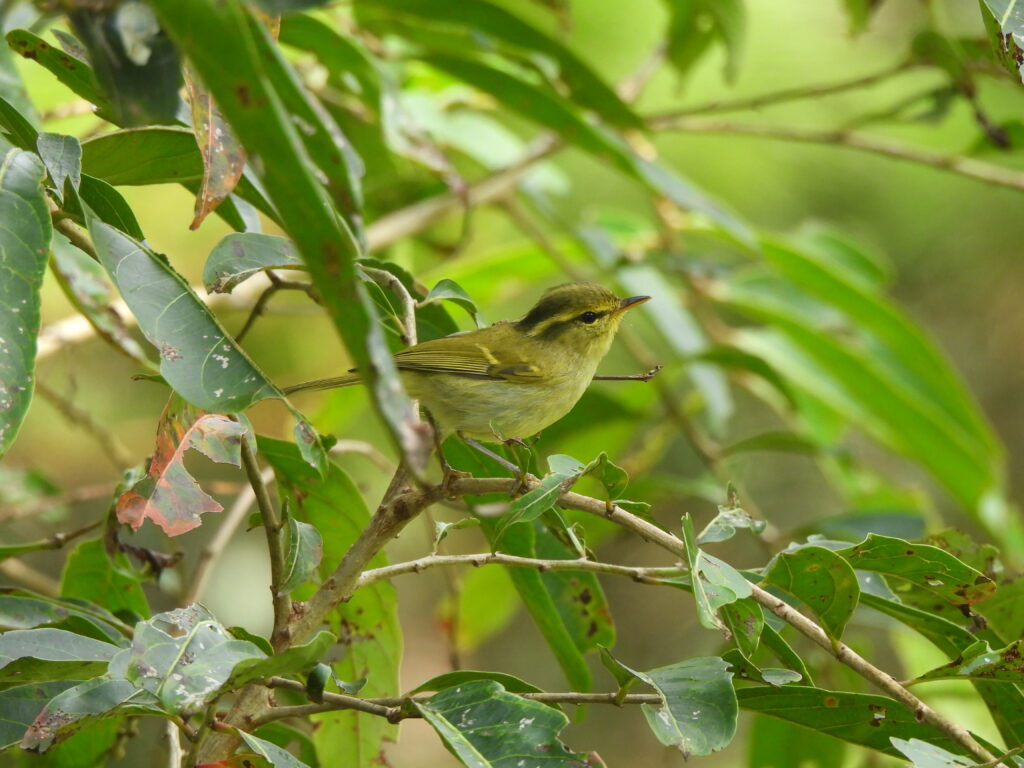
Small bird flocks featured mountain fulvettas, green-backed tits (Parus monticolus) and the local gray-crowned form of black-throated tit (Aegithalos concinnus). Leaf warblers and gray-headed canary-flycatchers (Culicicapa ceylonensis) often joined them.
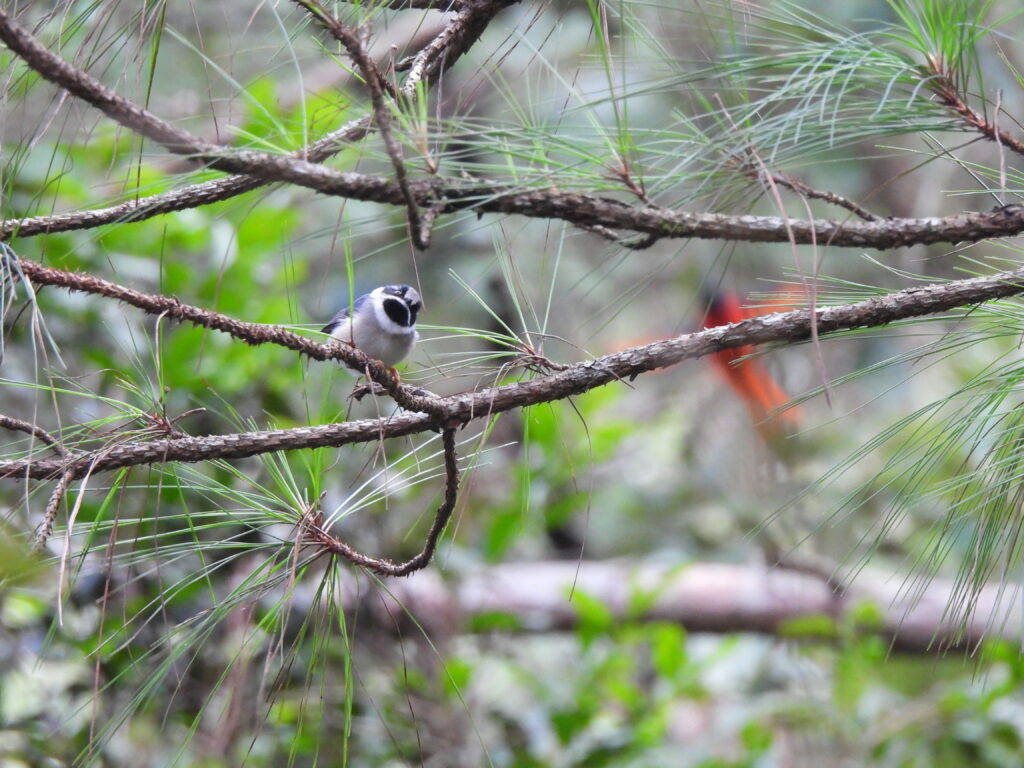
Other flocks mixed small birds, such as chestnut-crowned warblers (Phylloscopus castaneiceps) or the stunning local annamensis ‘purple-rumped’ form of Mrs. Gould’s sunbird (Aethopyga gouldiae) with some larger birds, such as mountain bulbuls (Ixos mclellandii), streaked spiderhunters (Arachnothera magna), the local leucotis ‘white-faced’ form of Eurasian jays, or the endemic robinsoni ‘Lang Bian’ race of black-headed sibia (Heterophasia desgodinsi).
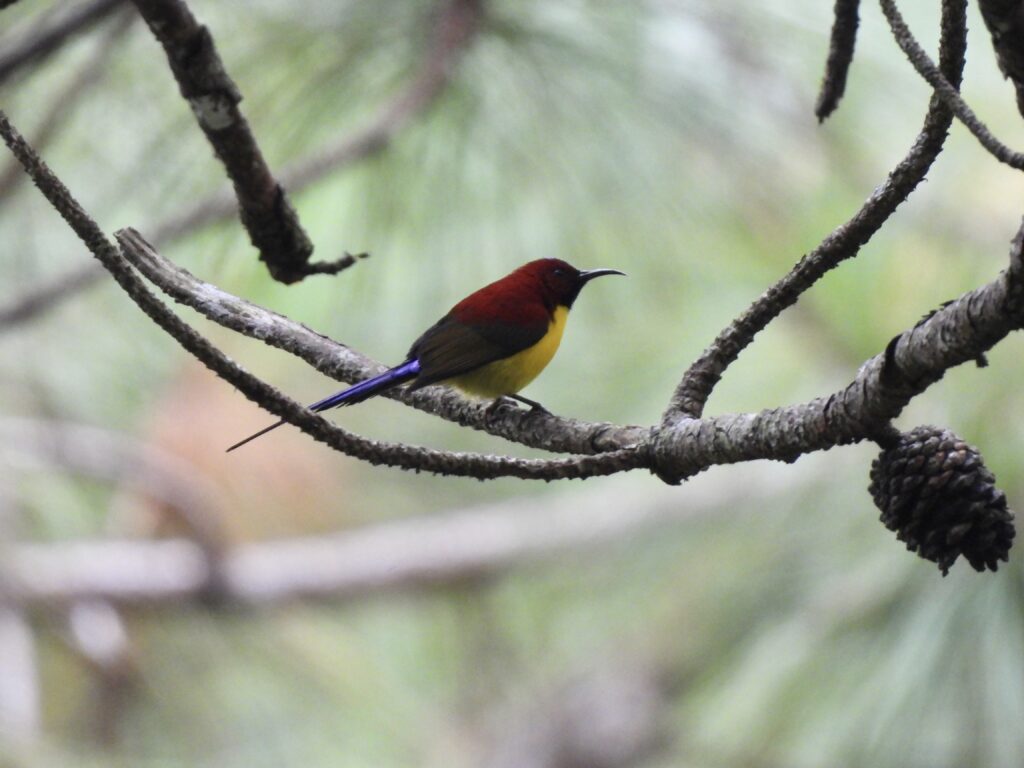
Although nerve-racking at first, I grew fond of browsing through these mixed-species foraging flocks while birding in Asia. This became even more exciting when endemic birds were involved, and mixed with others looking quite like birds I see back at home.

On that note, an abundant bird which was often part of these flocks and seemed abundant throughout Mount Lang Bian was the chestnut-vented nuthatch (Sitta nagaensis). The population in Vietnam is extremely isolated from the rest of its distribution range, as is the case for many other species in Da Lat plateau and the central highlands. Anyhow, different individuals proved to be photogenic and obliging.
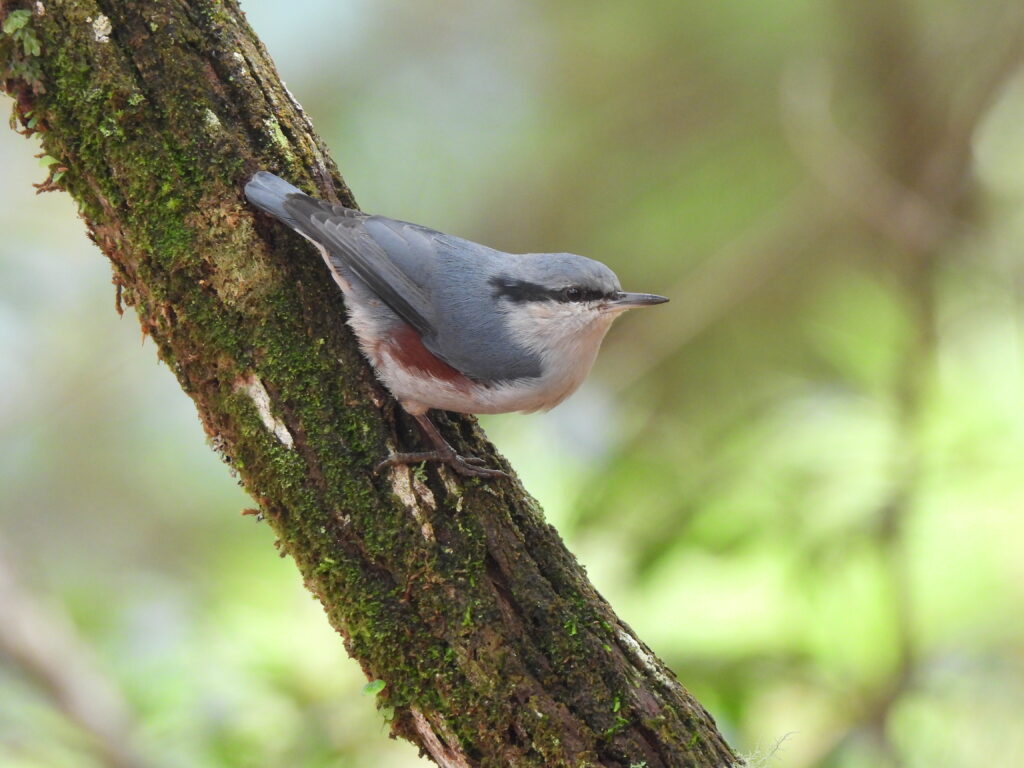
However, not all birds came in interspecific flocks. Darío and I were excited to find a flock of about half a dozen white-cheeked laughingthrushes (Pterorhinus vassali), a local specialty with a narrow distribution and a beautiful color pattern.
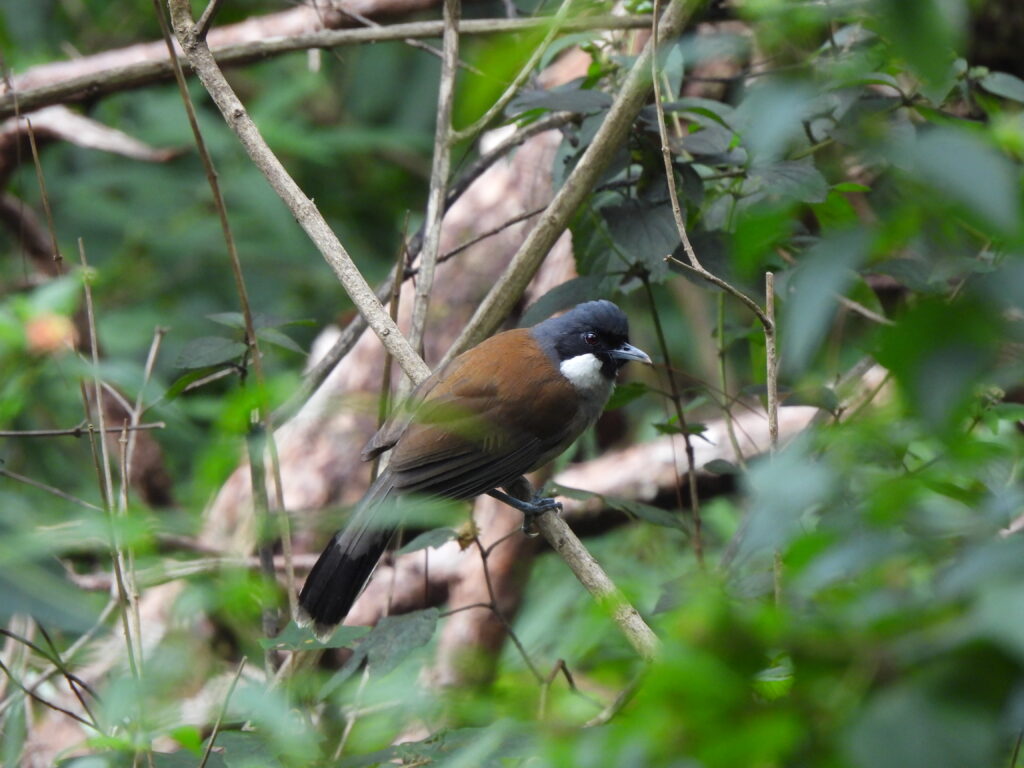
That was also the case of a less conspicuous bird, the rufous-capped babbler (Cyanoderma ruficeps). We bumped into a small flock of these skulkers in the vegetation next to the road, in the south edge of their wide distribution.

At a certain point, the road passes through a flat area where we did a pitch stop. The calls of necklaced barbets (Psilopogon auricularis) and at least one Indochinese barbet (Psilopogon annamensis) filled the atmosphere. Barn swallows (Hirundo rustica) and white-nest switflets (Aerodramus fuciphagus) flew over. But the most striking addition of this stop was the silhouette of a large blue-bearded bee-eater (Nyctyornis athertoni) flying between tree tops.
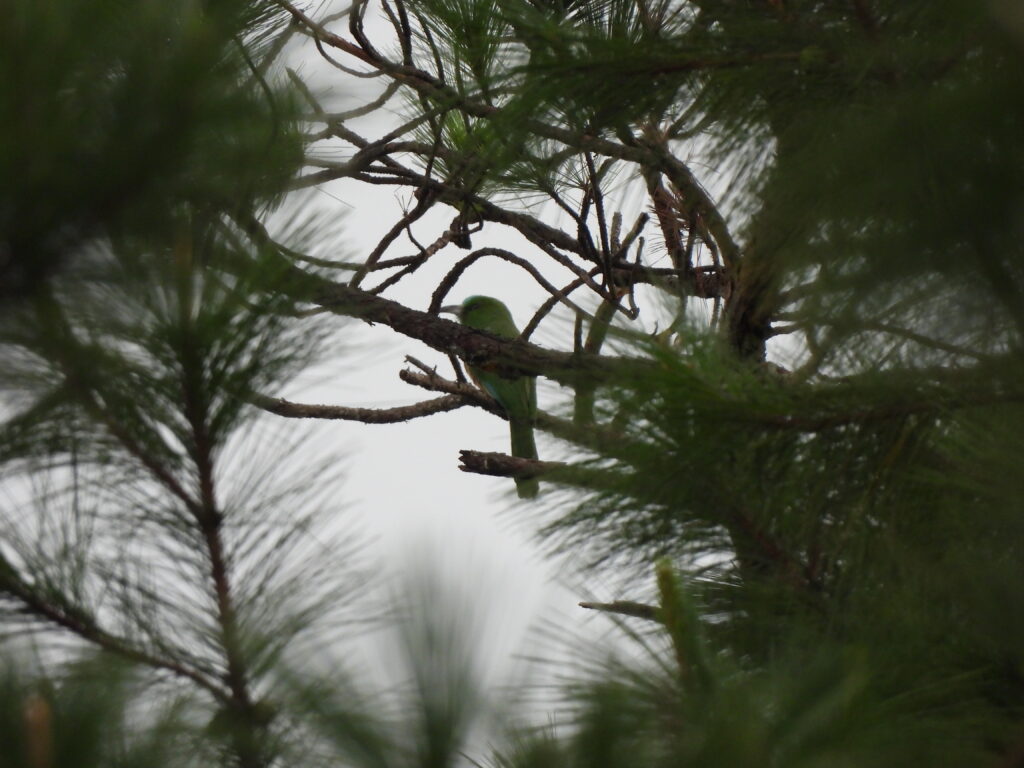
Beyond that point, the forest transitioned into a moist montane forest mainly composed of broadleaf trees. We found a great diversity of birds including numerous new species for the day. One of the first was the annamensis ‘Da Lat‘ form of white-browed shrike-babbler (Pteruthius aeralatus), of which we connected with a small flock with several individuals.
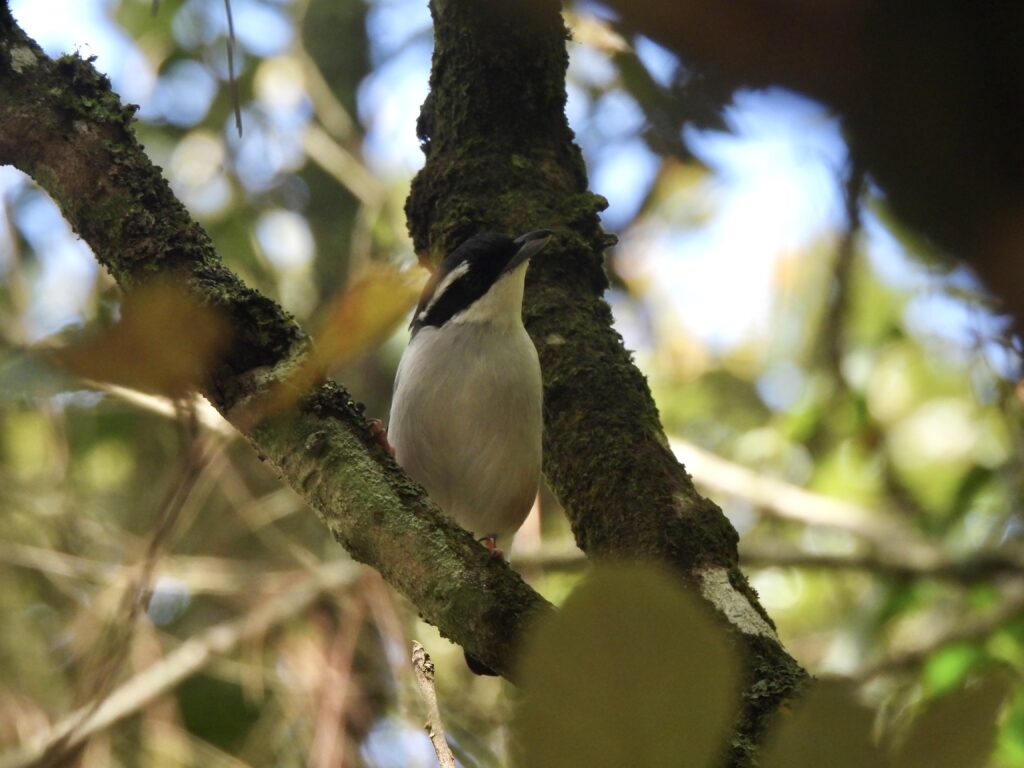
Flocks of small birds featured mountain tailorbirds (Phyllergates cucullatus), verditer flycatcher (Eumyias thalassinus), white-bellied erpornis (Erpornis zantholeuca) and blue-winged minla (Actinodura cyanouroptera). Mountain fulvettas were part of the group too.
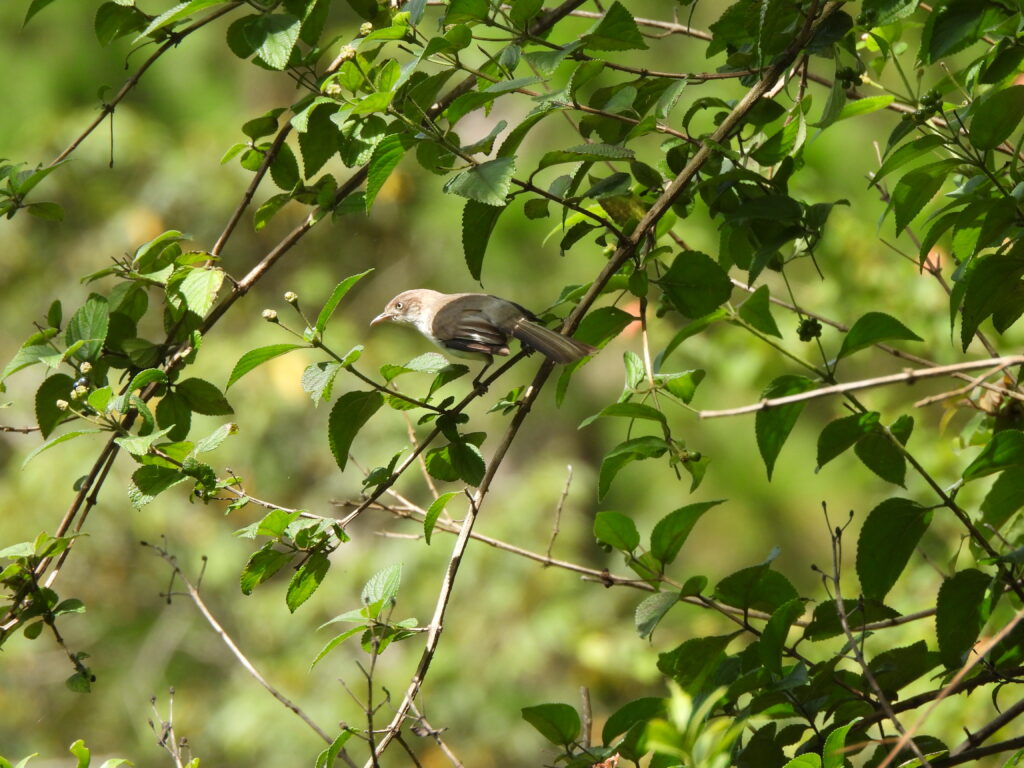
Another Europe analogue was found at this level of the forest. Some Hume’s treecreepers (Certhia manipurensis) foraged along one of such bird flocks, probing the tree bark for food. Again, a morphologically and ecologically analogue to the widespread European treecreeper species inhabiting Lang Bian forests.
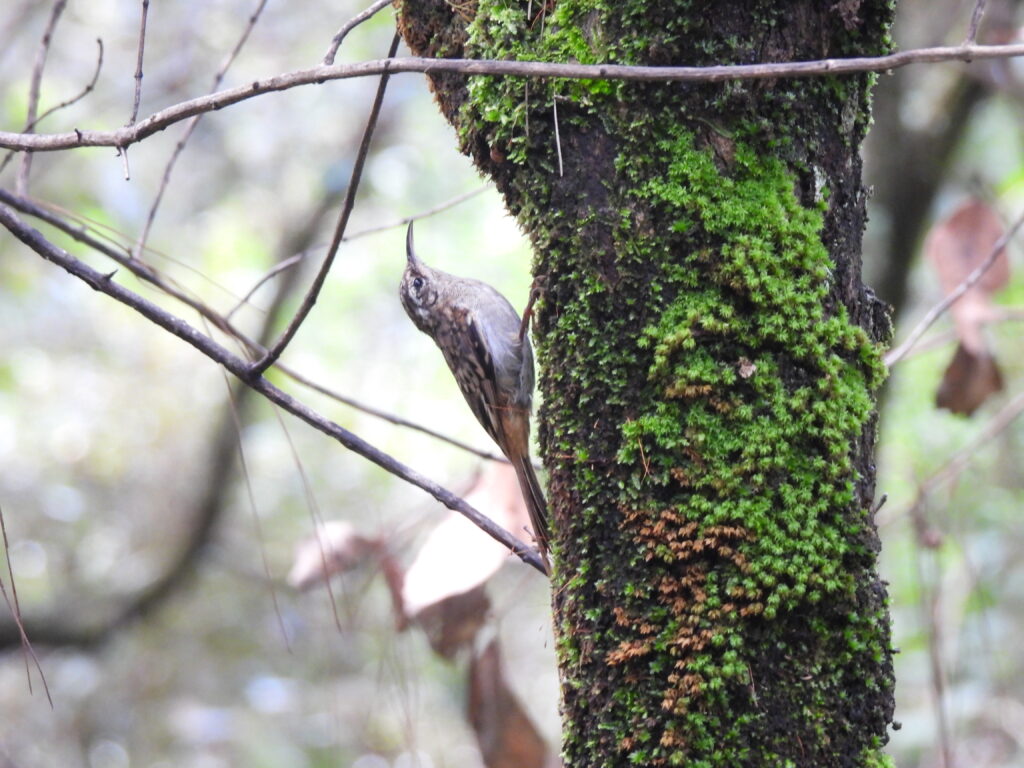
We stopped for a while on the road to have a snack when that flock left. Inconspicuous movements on the low vegetation on the roadside every now and then caught my attention. Staring at such plants resulted in a couple of very quick views of a minute stunner, the gray-bellied tesia (Tesia cyaniventer), hardly exposing itself under the thick shadow of the shrubs. Connecting with this tailless skulker without hearing it before felt great.
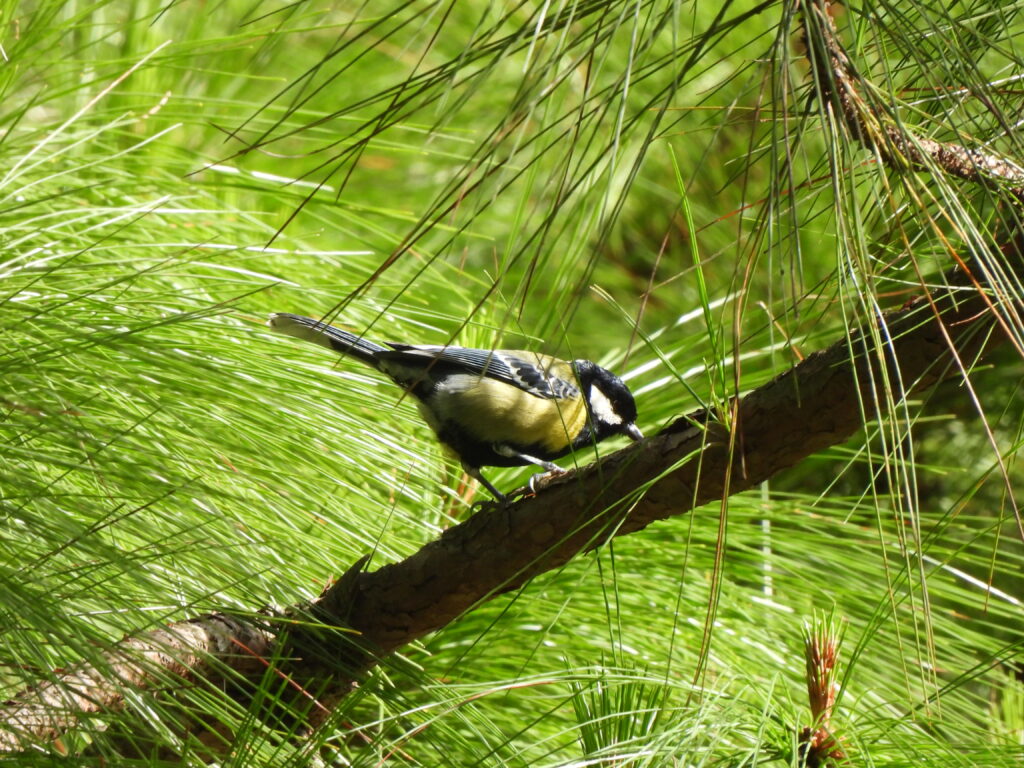
Lang Bian reaches 2167 m but we did not walk the last stretch (from ca. 1800 m on), all through montane broadleaf forest. This area seems to be productive in the right season, with broadbills and laughingthrushes, but we reached the area well after midday right in the middle of August. We turned back after realizing birds were nowhere to be heard or seen.
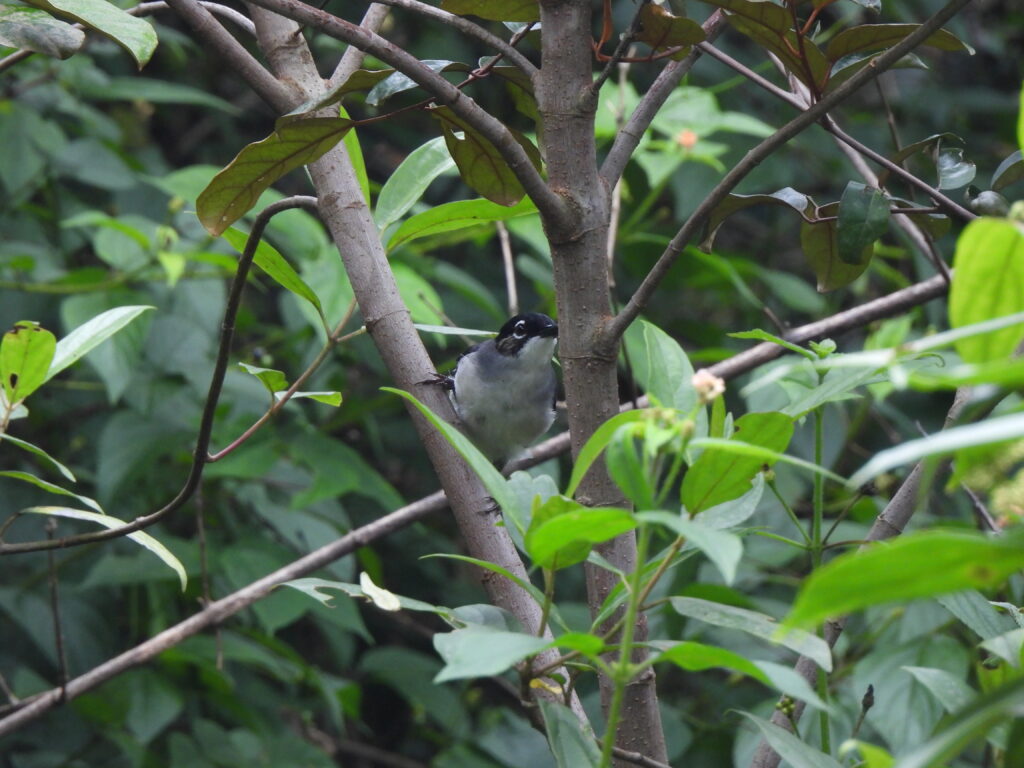
The hike downhill was steadier and less productive, but the mixed forest still provided some new goodies. The shadow under the thickest broadleaf shrubs held some new birds, including white-tailed robin (Myiomela leucura), little pied flycatcher (Ficedula westermanni), white-throated fantail (Rhipidura albicollis) and the local decorata ‘Da Lat’ form of large niltava (Niltava grandis).
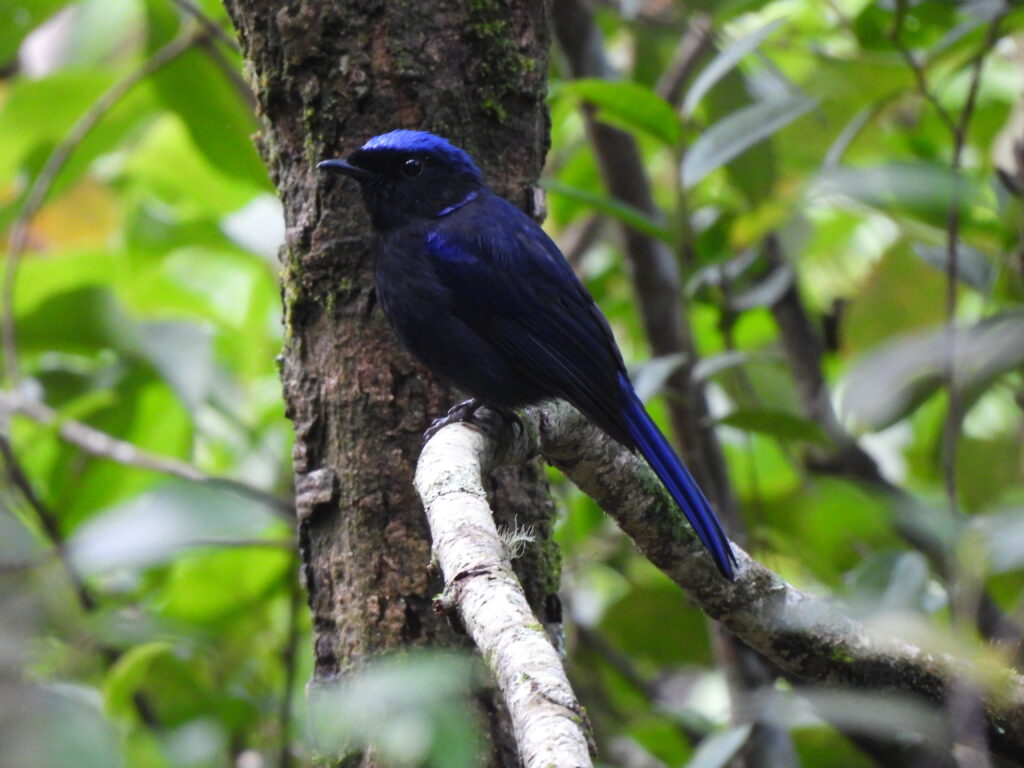
Further down, where the pine trees became clearly dominant, we connected with a gray-headed woodpecker. The case of this taxon is particular: birds in Da Lat belong to the guerini ‘black-naped’ form, widespread throughout Asia and considered a full species by some (Picus guerini), with a full gradient of features from France in the west all the way to Hokkaido and Sumatra in the east — the latest island holding yet another distinct population, again considered a full species by some (P. dedemi).

Over seven hours later, we made it to the initial point and asked somebody to kindly call us a cab. Mount Lang Bian proved extremely birdy, as we took our time (the birder’s pace) to walk uphill — and it still has much more to offer. The whole hike felt like some sort of a vivid dream. Lifers came in different shapes, some exotic and whimsical and others perhaps too familiar. This montane refugium was a joy to discover.




